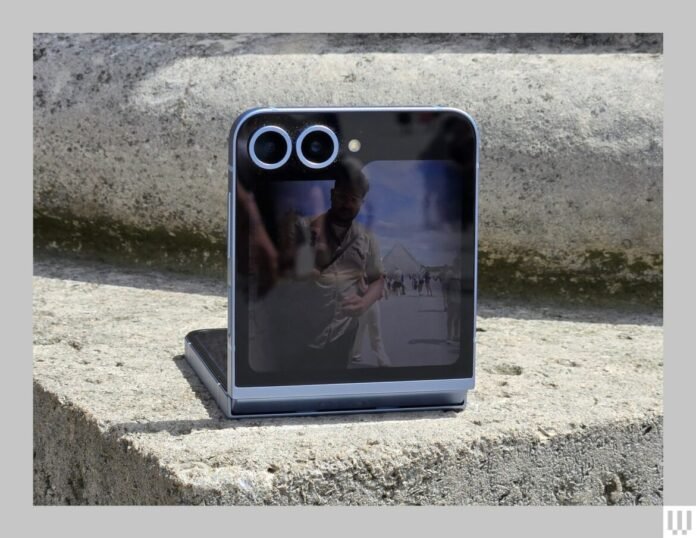The Fold6, despite the slightly larger 4400mAh battery, has a considerably larger display to power, so my experience with the battery has been about the same. A full day with average usage (maybe a bit more) or more intensive usage (i.e. watching a lot of Instagram reels) will likely require an overnight recharge, especially if you use the 7.6-inch display a lot. I’ve been able to get up to two days of use out of it with minimal use. It’s also great to have the option to expand the screen real estate at will.
Samsung Galaxy Flip6 main camera
I’ve multitasked with split-screen apps and enjoyed the larger view on some apps that take advantage of the larger screen. There’s still a crease in the middle, but that never gave me much trouble. does I’m annoyed that I have to rotate my phone to landscape view to get the much nicer two-pane view in Gmail (where I can see my email list on the left and the content of the emails on the right). I know this isn’t Samsung’s fault, but there’s a lot of collaboration between the two companies and I wish this had been resolved by now.
Other annoyances? I no longer like the side-mounted fingerprint sensor on these phones. I’m too used to accessing an in-screen sensor, which is easier to reach with whichever hand is holding the phone, but the capacitive sensor on the side often requires me to change grip or use my other hand to unlock. (It’s a minor detail, but hey, it’s been six years now!)
The cameras now look more like those on the Galaxy S24 series and are pretty good. I rarely had any complaints with the resulting photos, though I would have liked to see Samsung include a longer telephoto zoom camera, like the 5X optical zoom on its Galaxy S24 Ultra. That said, do I like the addition of a camcorder mode on the Flip6: launch the camera, go to video mode, and place the flip phone at a 90-degree angle and sideways in your hand as if you were holding a camcorder. I find it easier to film and access the on-screen controls with one hand and get stable footage.
Photography: Julian Chokkattu
Photography: Julian Chokkattu
The number one camera feature is the same as before: you can see the preview on the external screen of either of these phones, allowing you to take your own hands-free travel photos in front of a subject without having to hand your phone to a stranger. As I was setting up the Flip6 to take a photo in front of the Eiffel Tower, a tourist asked if I wanted her to take the photo. I said no thanks; she saw the Flip6 angled toward me and said, “Wow, is that a flip phone? That’s really clever.” Sure enough.
It’s a great travel companion, especially with Samsung’s new updates to Interpreter Mode. Activate this mode and you can fold the screen so your words are translated into text on the external screen for the other person to see. You can tap a button on the external screen to start speaking and your translated words will appear on the internal screen. It works well enough to work when you’re in optimally noisy conditions and people are speaking relatively clearly, though you still have to get over the awkwardness of showing how the whole process works with gestures first.
The AI tax
Much of what’s new on the Fold6 and Flip6 is Galaxy AI, the wave of artificial intelligence features that Samsung first rolled out on the Galaxy S24 series. I rarely found myself needing to use most of them, but some are useful, like the Voice Recorder app, which does a good job of transcribing audio recordings (though it’s not as instantaneous as Google Recorder on Pixel phones). Most impressively, it can translate those notes into another language.

